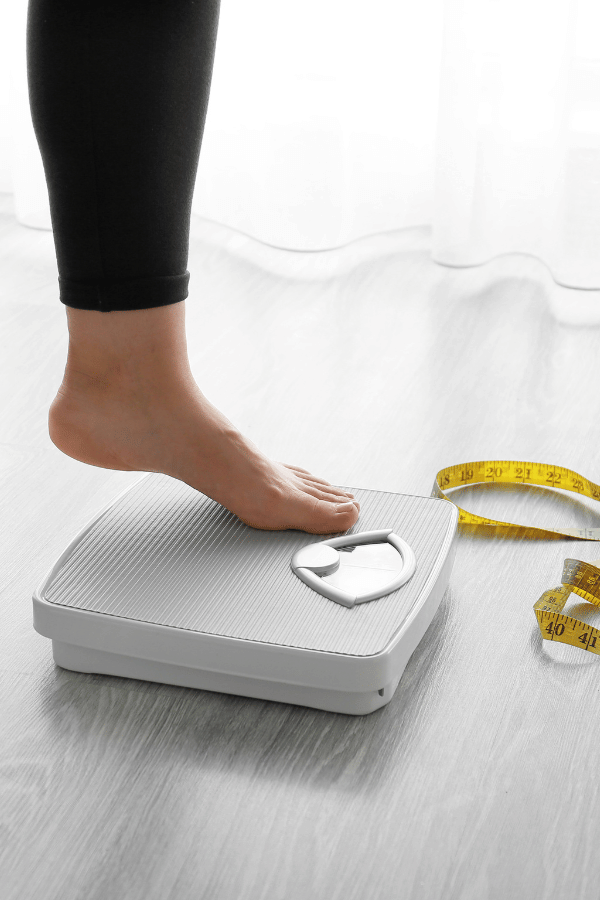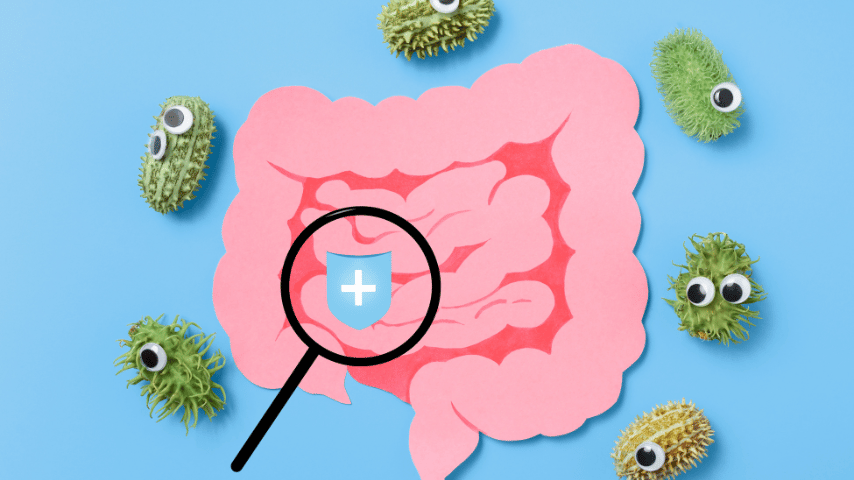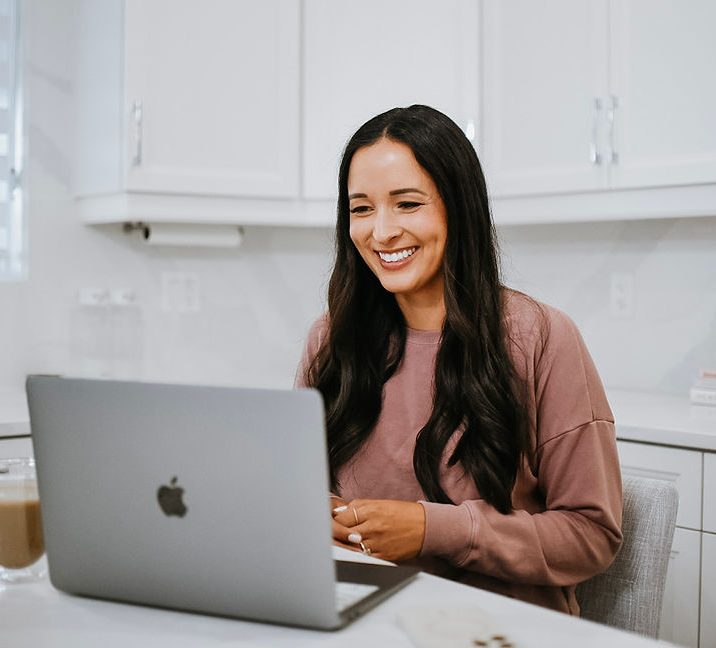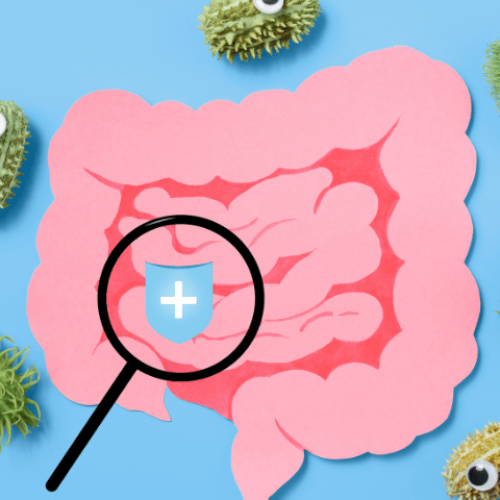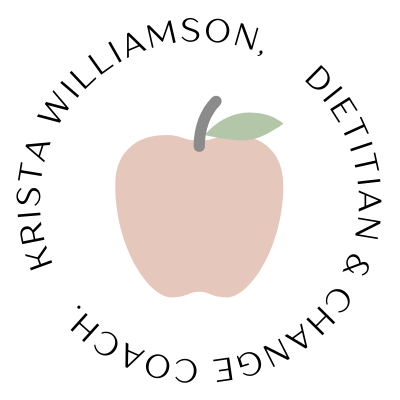When you combine North America’s hustle culture and health-conscious society, you have the perfect recipe for the ever-expanding popularity of protein powders. They are an extremely convenient way to get a high dose of muscle-building protein.
If I had to guess the number one topic of questions I receive on Instagram, I think it would be related to protein powders. They are wildly popular, yet I find many people don’t know what to look for, don’t know what’s actually in their protein powder, or don’t know how to use them. In this blog post, I hope to explain everything you need to know about protein powders, including how to make the best choice for you!
In this post, we’ll cover:
- Types of protein powders
- The benefits of protein
- Do you need a protein powder?
- The ingredient list
- What to look for when buying a protein powder
- My opinion and choices
Understanding the types of protein powder
WHEY
The liquid by-product derived from the cheese-making process. It is the most popular type of protein powder on the market.
- Whey protein contains all essential amino acids (EAA’s), making it a complete protein source.
- It has a fast absorption rate making it a great source of protein post-workout.
- Excellent source of BCAA’s (branched-chain amino acids) which are used to fuel muscles, stimulate protein synthesis, and strengthen the immune system.
- It comes in various forms such as whey protein concentrate, isolate, and hydrolysate, each with different protein concentrations and processing methods.
CASEIN
Derived from milk.
- Casein is digested and absorbed more slowly, providing a more sustained release of amino acids, making it ideal for prolonged periods without food. For this reason, casein protein is more commonly used at bedtime instead of post-workout.
Casein protein also contains all the EAA’s, therefore, a complete protein source.
Excellent source of BCAA’s and contains higher levels of glutamine, an amino acid important for muscle recovery.
COLLAGEN
Typically bovine (sourced from cow hide or bone) or marine (sourced from fish skin and scales).
- Collagen is not a complete protein because it lacks tryptophan, one of the nine essential amino acids.
- Can help reduce the appearance of fine lines, wrinkles, and age spots and improve skin elasticity and hydration.
- Can help to lubricate joints and help reduce joint inflammation.
- I have an entire blog post dedicated to collagen supplements, click here to read it.
SOY
Derived from soybeans and is a popular option for vegetarians and vegans.
- It contains all essential amino acids, making it a complete protein.
- Soy protein may offer various health benefits, including potential reductions in cholesterol levels and improved heart health.
- There are different types of soy protein, such as soy protein isolate and soy protein concentrate. Isolate is made from soybean flakes that have had the fat, carbohydrate, and fibre removed. Concentrate contains more fibre than isolate and is made from soy flour that has had the fat and some of the carbohydrate removed.
LEGUME (PEA/LENTIL/BEAN)
Derived from yellow split peas, lentils or a variety of beans and is another popular option for vegetarians and vegans.
- Pea/legume/bean protein technically contains all 9 essential amino acids, however, are not considered complete because they lack sufficient methionine. They can be combined with other plant-based proteins, like rice protein, to provide the full range of amino acids.
- It is hypoallergenic, making it suitable for those with dairy or soy allergies.
- Good source of fibre.
- Can have a gritty texture – tastes better blended with other ingredients (IMO).

RICE
Derived from brown rice.
- Hypoallergenic, gluten-free, and easily digestible.
- It is not a complete protein source on its own – it lacks lysine.
- Contains fibre, which means brown rice protein can take longer to digest than other fast-absorbing proteins like whey.
- Has an increased potential for contamination with the heavy metal arsenic, which makes the choice of brand even more important.
HEMP
Derived from hemp seeds.
- Rich in omega-3 fatty acids and fibre.
- A lower protein content compared to other options. It contains all 9 EAA’s, however, is not considered complete because it contains insufficient lysine and is also low in leucine.
- Hemp protein is easily digestible and may be a good option for those with sensitive stomachs.
- It is a sustainable protein source, as hemp plants require minimal water and pesticides to grow.
EGG WHITE
Derived from egg whites.
- A complete protein source, it contains all essential amino acids.
- Source of BCAA’s.
- Medium digestion rate.
- Dairy-free and easily digestible. Egg white protein is often used by individuals who are lactose intolerant or allergic to dairy.
GRAINS
Derived from whole grains such as amaranth, quinoa and millet.
- Many are gluten-free.
- Some, such as quinoa, contain all 9 essential amino acids, but most others lack lysine.
- Great source of fibre, phytochemicals and micronutrients.
BLENDS
- Many protein powders and protein-fortified products such as protein bars include protein blends. For example, some plant-based protein powders include a blend of rice, grains, legumes, and seeds. It’s important to read the ingredient list to understand which protein sources are being used.

Benefits of protein
Protein is often considered the healthiest macronutrient, compared to carbohydrates and fats – which is not true. Each macronutrient is essential and should be consumed daily, including protein.
Protein helps with:
- muscle growth and repair
- increase feelings of fullness and satiety
- stabilize blood sugar levels
- promote strong bones
- support immune function
- enzyme and hormone production
- promoting healthy hair, skin and nails
Do you need to use protein powder?
The quick answer is no!
Most people can meet their protein needs without protein powder. As mentioned above, there are a wide variety of natural food sources of protein. However, protein supplements, such as protein powder can be a great option when convenience is needed or can be helpful to supplement a high-protein diet.
The amount of protein we need each day depends on our body, health, activity level, and goals. But generally speaking, most healthy adults should consume ~ 1.2-2.4 g/kg/day* (grams per kilogram body weight per day).
*This amount is generalized and not for everyone. Please talk to your HCP or Dietitian for an individualized plan.
If you need help determining how much protein you need for your goals or need help building a plan to eat enough protein each day – book a nutrition strategy session with me or check out the method!
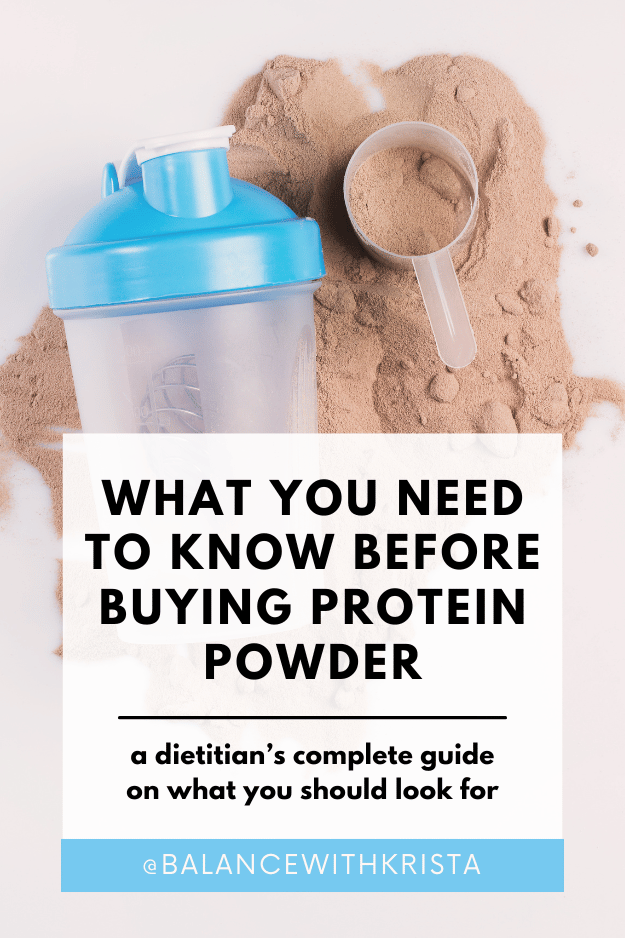
The ingredient list
When you dive into the ingredient list on your protein powder, you’ll likely recognize a few key words like whey, casein, pea, rice, or soy protein. But if you keep scanning, you might stumble on some unfamiliar compounds or additives. From fillers to thickeners to sweeteners and beyond, let’s dissect some of the most common ingredients added to your protein powder, so you can make an informed choice.
1. PROTEIN
You’ll often notice the words “isolate,” “concentrate,” or “hydrolysate” next to your protein source in the ingredient list. Although there are many differences between them, the main difference is how they’re processed. Hydrolysates are the most processed/filtered and then the protein has been broken down making it easier to digest. This type could be especially beneficial for people with digestive issues, allergies or intolerances. Isolates are more processed (filtered) than concentrates which results in a product that has more protein and less carbohydrates and fat per scoop. This filtration process also helps to remove lactose, which makes whey isolates virtually almost lactose-free and can often be tolerated by people who are sensitive to lactose. Concentrates are the least processed (filtered), however, they may have less protein per scoop. Concentrates also tend to be the least expensive.
2. THICKENERS AND STABILIZERS
Thickeners and stabilizers such as lecithins, carrageenan, xanthan gum, or silicon dioxide are often used in protein powders as emulsifiers to help stabilize the powder, reduce clumping, and make it easier to blend. Certain thickeners and anti-clumping ingredients also double as preservatives to help protein powders stay on your shelf longer. Small amounts of these ingredients are considered safe, however, some are sourced from common allergens such as wheat, soy, dairy, or corn, which can be problematic for those with a sensitivity to these ingredients.
3. FILLERS
Fillers such as maltodextrin, cornstarch or corn syrup solids, are often added to powders by manufacturers to enhance the overall texture. They help to increase the volume of the powder but don’t increase the overall nutrition. While these ingredients aren’t necessarily harmful, they can be a sign of a lower-quality product and could trigger digestive issues such as gas or bloating.
4. SWEETENERS OR SUGAR ALCOHOLS
Often used as a quick way to enhance the flavour of protein powders without significantly altering the nutritional profile, artificial sweeteners and sugar alcohols are very common in many flavoured protein powders.
- Nutritive sweeteners, like honey, maple syrup, brown rice syrup, coconut sugar, cane sugar, molasses, and agave. For most people, I recommend choosing a protein powder that has less than 5 grams of sugar per serving.
- Non-nutritive sweeteners, like sucralose, aspartame, saccharin, acesulfame-potassium, stevia and monk fruit.
- Sugar alcohols, like sorbitol, xylitol, mannitol, and erythritol.
Sometimes manufacturers advertise their products as “natural” or contain “no artificial sweeteners” – yet they contain stevia or monk fruit. Unfortunately, these claims are not regulated, so it’s best to use your ingredient list rather than the claims on the front of the packaging.
Both sweeteners and sugar alcohols are considered safe in small amounts, but be aware that overconsumption of sugar alcohols could upset your GI tract and lead to increased bloating or diarrhea. To avoid this, you can look for unflavoured options.
To learn more about sweeteners and sugar alcohols, click here for my detailed blog post!

What to look for when buying protein powder
1. Brand / Quality Assurance
In Canada, protein powders that have been assessed for quality, safety and efficacy by Health Canada will have an 8-digit Natural Product Number (NPN) listed on the label (e.g., NPN 80106132). There are also third-party testing certifications to assess safety such as cGMP (Current Good Manufacturing Practices). When selecting a protein powder, I recommend choosing one with an NPN or third-party certification or contacting the company to learn more about their quality assurance processes when possible.
2. Type of Protein
Use the information above to make the best choice for you! It may be beneficial to keep different types of protein in your pantry to use for different purposes, for example, a whey protein after a workout and a plant-based blend with more fibre and omega-3 fats with your breakfast smoothie.
3. Amount of Protein
It is a protein supplement, so I would suggest aiming for a powder that has at least 20 grams of protein per scoop. You can also glance at the amount of fat and sugar to help you make your decision.
When the goal is building muscle, look for the BCAAs (leucine, isoleucine and valine), and aim for at least 2 grams of leucine per scoop.
4. Ingredient List
First, make sure that your protein type is listed as the first ingredient.
The ingredient list of a protein powder will vary depending on the intended purpose. If you’re looking for a protein powder solely to boost protein intake, it should have a fairly short ingredient list (5 or fewer ingredients – usually protein, a stabilizer and flavour/sweetener).
If the protein powder is intended for a meal replacement or to perform a dual function as both a protein supplement and a vitamin and mineral supplement, the ingredient list will contain extra ingredients including carbohydrates, fibre, healthy fats and added vitamins and minerals.
I’m personally not a fan of “proprietary blends” where ingredient specifics are not transparent.
You may also want to look for and avoid stimulants like caffeine, especially if you’re using the protein after an evening workout.

My opinion
Many people, especially women, aren’t consistently eating enough protein. As a Dietitian, I will always recommend aiming to meet your nutrition needs with food first. I suggest including a quality source of protein at each meal, whenever possible. But the reality of life is that sometimes we don’t want to cook or we’re in a rush – and rather than relying on a box of crackers or a bag of chips, I’d much rather my clients reach for a protein supplement that will offer them more nourishment and satiation. And yes, as long as you’re choosing a quality supplement, it’s okay if you consume it daily – if you want to!
What kind of protein do I recommend? The kind you get from food! Seriously. What better way to get your branched-chain amino acids and protein than from the natural food source – before the processing! You don’t need protein powders to obtain BCAAs and protein in your diet. Since whey is naturally occurring in milk, eat some yogurt, milk, or cottage cheese for the same benefits. Other great sources of protein are eggs, poultry, fish, beans, lentils, quinoa, nuts, nut butter, textured vegetable protein, tofu, or soybeans. It’s not just protein powder that’s packed with protein!
Enjoy whole food whenever you can, and if you find protein powders to be more convenient for you and your schedule, go for it (I use them too!). Just make sure you’re using a good product that fits the recommendations listed above.
Lastly, because I know that I’ll get asked what my favourite protein powders are, I figure now is a good time to share them with those of you who have made it this far! *I have NO affiliation with these brands and am not being compensated to share this.
Please remember that everyone’s needs, tastes and preferences are different, but here are a few that I like!
Naked Whey (25g per scoop, NPN and third-party tested)
Revolution Nutrition Pure Whey Isolate (35g per scoop, third-party tested)
Canadian Protein Whey Isolate (27g per scoop, third-party tested)
Vega Sport Plant-Based, Vanilla (30g per scoop, third-party tested)
Comments, Questions?! Let me know below or send me a DM!
Thinking about trying a smoothie? Grab my free Balanced Smoothie Guide by clicking here, and commenting SMOOTHIE.
PLEASE NOTE:
I’d love to know if this was helpful to you! If you have any questions, please DM me on Instagram or comment below.
All blog posts are written for general nutrition improvement and should only be used as a guide. This article is intended for educational purposes only and is not designed to diagnose, treat, prevent or cure any condition. It is not specific advice for any individual. Before adding supplements to your regimen, please speak to your healthcare professional.

